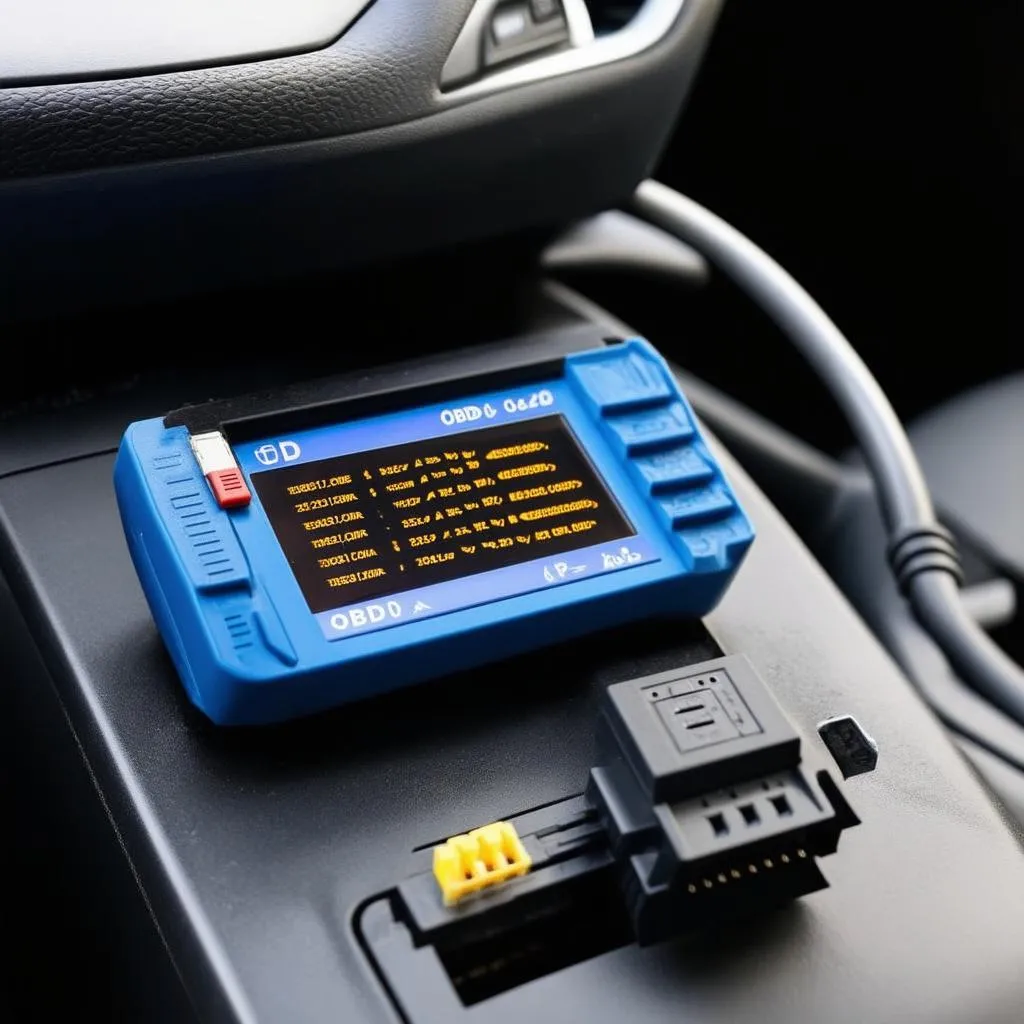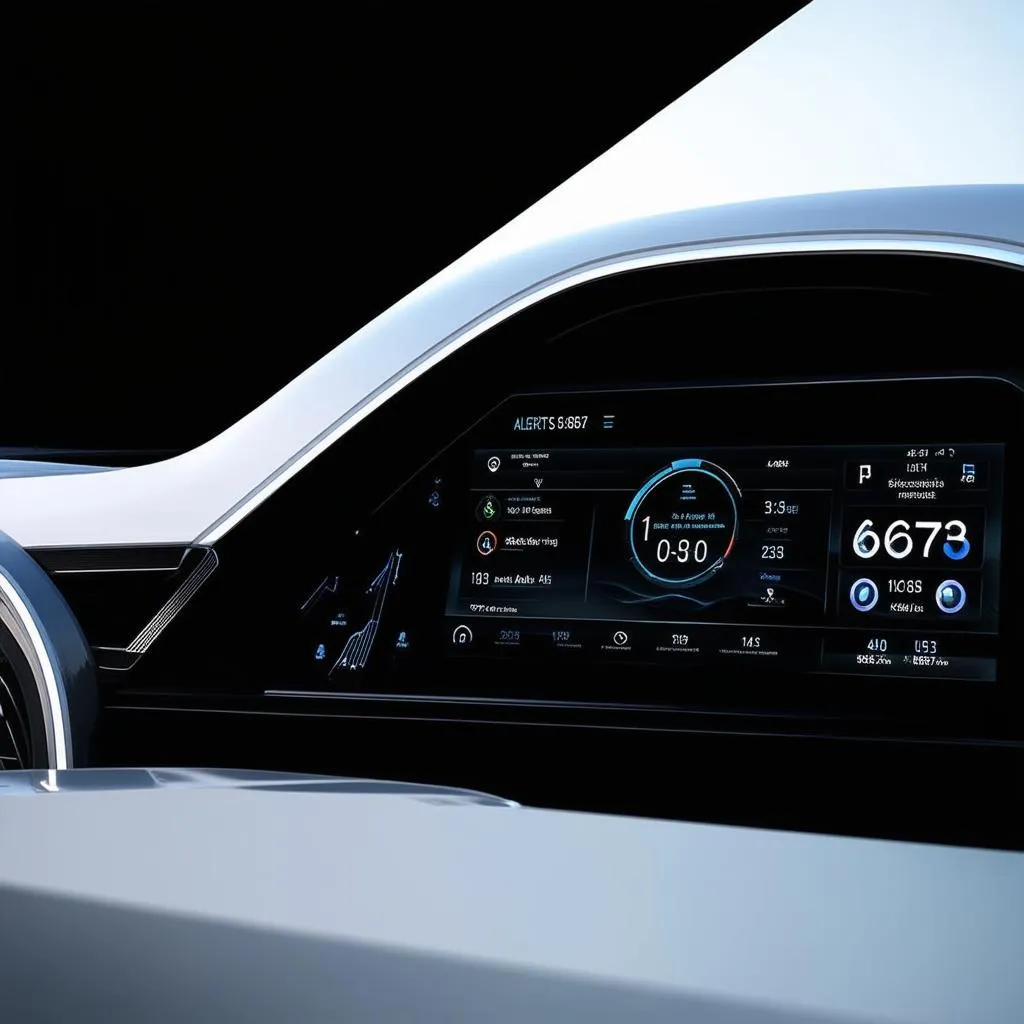Have you ever heard the term “OBD sensor” and wondered what it is? You’re not alone! Many car owners find themselves scratching their heads when they encounter this unfamiliar term. But fear not, because we’re about to unlock the mystery of the OBD sensor and equip you with the knowledge to navigate the world of automotive diagnostics like a pro.
The Meaning of OBD Sensor: Diving into the World of Automotive Diagnostics
The term “OBD sensor” is often used interchangeably with “OBD port” or “OBD connector.” It actually stands for “On-Board Diagnostics,” and it’s a vital component in modern vehicles. Think of it as a gateway to your car’s health. It’s essentially a standardized diagnostic system that allows technicians and even you, the car owner, to access and interpret data about your vehicle’s performance.
Imagine you’re a detective investigating a crime scene. You need to gather clues to figure out what happened. Similarly, an OBD sensor provides crucial information about your car’s inner workings, helping you identify any potential issues before they escalate into major problems.
Decoding the OBD Sensor: How Does it Work?
The OBD sensor, usually located under the dashboard near the steering wheel, acts as a communication hub. It’s a physical connector that links your car’s computer, known as the Engine Control Unit (ECU), to a diagnostic tool like a scanner. This scanner, like a detective’s magnifying glass, allows you to read codes and information stored within the ECU.
The ECU constantly monitors various systems like engine performance, fuel efficiency, emissions, and even your car’s speed. It stores these details as codes, which the OBD sensor can transmit to a diagnostic tool.
The Significance of OBD Sensors: A Key to Maintaining Your Car’s Health
OBD sensors are crucial because they provide valuable insights into your car’s health. Just like a doctor uses various tools to examine a patient, technicians use OBD sensors to diagnose potential issues and keep your car running smoothly.
Here are a few key benefits:
-
Early detection of problems: Imagine you could receive a heads-up before your car started acting up. That’s the power of OBD sensors! By interpreting the codes and data they provide, you can catch potential problems early on, preventing them from escalating into major repairs.
-
Accurate diagnosis: With OBD sensors, technicians can quickly and accurately identify the source of a problem. This means less time spent on guesswork and more efficient troubleshooting.
-
Reduced maintenance costs: Early detection of issues allows you to address them proactively, potentially saving you money on costly repairs down the road.
-
Increased fuel efficiency: By analyzing data related to fuel consumption and engine performance, technicians can optimize your car’s fuel efficiency, helping you save money at the pump.
-
Environmental benefits: OBD sensors play a crucial role in ensuring your car meets emission standards, contributing to a cleaner environment.
How to Use an OBD Sensor: A Step-by-Step Guide
Using an OBD sensor is surprisingly easy. Here’s a simple guide:
-
Locate the OBD port: The OBD port is usually found under the dashboard near the steering wheel. It’s a standard 16-pin connector.
-
Connect the scanner: Plug your OBD scanner into the OBD port.
-
Select your vehicle: Most scanners will prompt you to select the year, make, and model of your vehicle.
-
Read the codes: The scanner will display any fault codes that have been stored in the ECU.
-
Interpret the codes: You can use online resources or a repair manual to understand the meaning of the codes.
Frequently Asked Questions About OBD Sensors
Q: What are some common OBD codes and what do they mean?
A: Common OBD codes include P0122, P0713, P1133, and P0463. These codes often indicate issues with the throttle position sensor, transmission fluid temperature sensor, oxygen sensor, and fuel pressure sensor, respectively.
 Common OBD Codes
Common OBD Codes
Q: Can I use an OBD sensor to reset a check engine light?
A: Yes, you can use an OBD sensor to reset a check engine light. However, it’s important to remember that simply resetting the light doesn’t address the underlying issue. It’s crucial to address the problem before driving again.
Q: How often should I use an OBD sensor to check my car’s health?
A: It’s recommended to use an OBD sensor at least once a year or whenever you notice any unusual symptoms like reduced engine performance or a change in fuel efficiency.
Q: Can I use a smartphone app to read OBD codes?
A: Yes, there are many smartphone apps available that can connect to your car’s OBD port and read codes. These apps can provide a convenient way to monitor your car’s health.
The Future of Automotive Diagnostics: A Glimpse into the Connected Car
The world of automotive diagnostics is constantly evolving. We’re moving towards a future where cars become increasingly connected, allowing for real-time monitoring and data sharing. This technology can benefit drivers by providing:
-
Proactive maintenance alerts: Imagine receiving alerts on your smartphone about potential issues before they even become noticeable. This could save you time and money on unexpected repairs.
-
Remote diagnostics: With connected car technology, technicians can remotely diagnose issues and even make adjustments to your car’s settings.
-
Personalized driving insights: Data collected from your car’s systems can provide personalized insights into your driving habits, helping you improve your fuel efficiency and driving style.
Conclusion: Navigating the Automotive World with Confidence
Understanding the OBD sensor can empower you to take charge of your car’s health. By using a diagnostic tool, you can gain valuable insights into your car’s performance and address potential problems before they escalate. As technology continues to advance, the world of automotive diagnostics is sure to become even more sophisticated, leading to a future where driving is safer, more efficient, and more convenient.
 Future of Automotive Diagnostics
Future of Automotive Diagnostics
For expert assistance with installing diagnostic tools or any other automotive repair needs, contact us via WhatsApp at +84767531508. Our team of automotive specialists is available 24/7 to answer your questions and provide personalized solutions.
Don’t forget to share your experiences with OBD sensors in the comments below. We’d love to hear your stories and insights! And be sure to check out our other articles on topics like OBD codes, diagnostic tools, and common car maintenance tips.